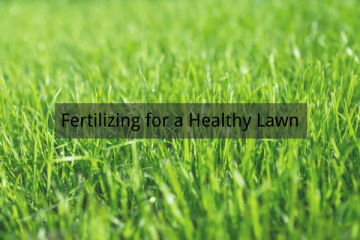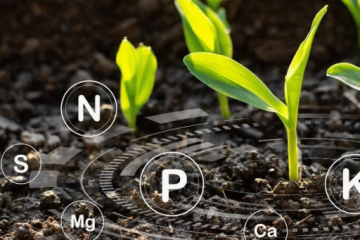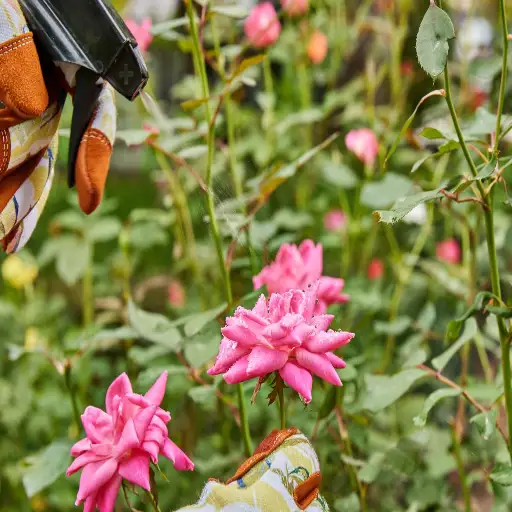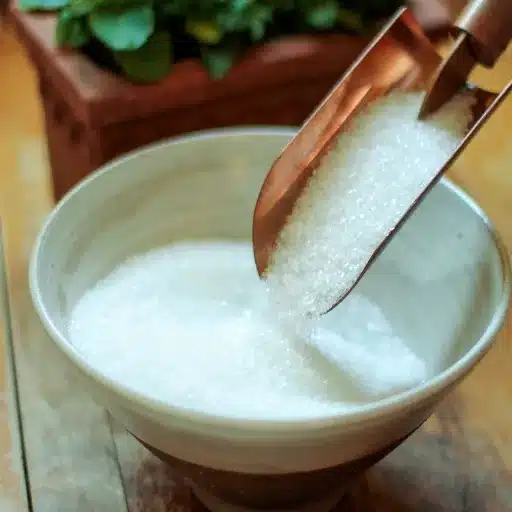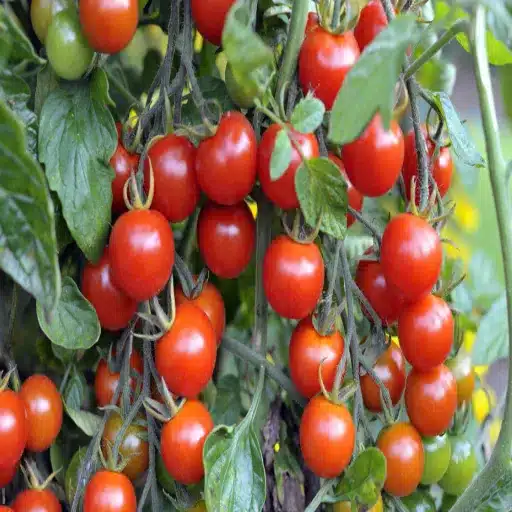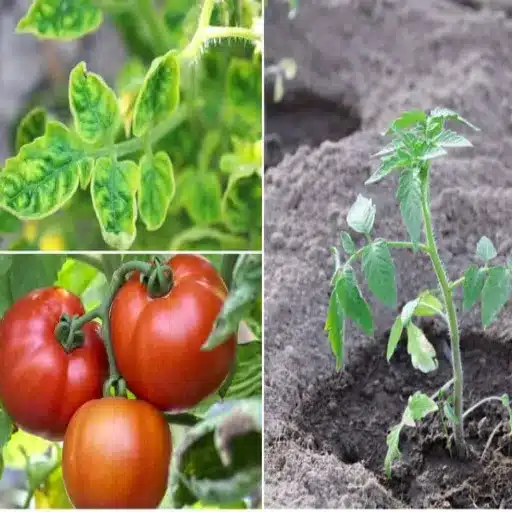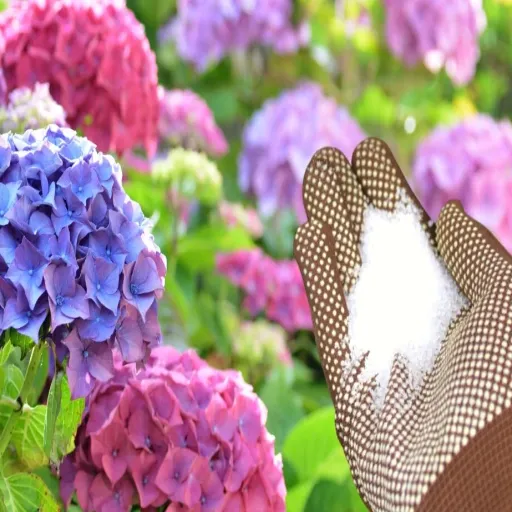Gardening enthusiasts are always on the lookout for cost-effective, natural solutions to enhance plant health and boost yields. One such solution that has garnered significant attention is Epsom salt. Known scientifically as magnesium sulfate, this common household product offers a surprising range of benefits when incorporated into your gardening routine. But how exactly does Epsom salt aid plant growth, and which plants benefit the most? This guide dives into the science behind Epsom salt and its role in fostering healthier, greener, and more productive gardens. Whether you’re a seasoned gardener or just starting out, this article will equip you with actionable insights to unlock the full potential of your plants using Epsom salt.
How Does Epsom Salt Benefit Plants?

What Nutrients Does Epsom Salt Provide?
Epsom salt, or magnesium sulfate (MgSO₄·7H₂O), contains two important nutrients for plant health: magnesium (Mg) and sulfur (M). Plants cannot thrive without magnesium, and for good reason. It is the backbone of chlorophyll, the pigment responsible for capturing sunlight and whose loss can lead to stunted plant growth. Hence, it is no surprise that magnesium deficiency leads to interveinal chlorosis. That is why we see yellowing between the veins of a leaf.
Plants use up secondary nutrients in smaller quantities compared to primary nutrients, which include nitrogen, phosphorus, and potassium. But small does not mean any less important. The absence of secondary nutrients such as magnesium and sulfur can lead to plant health complications. Magnesium, although indirectly, is vital for nutrient uptake because it enhances phosphorus transport and enables nitrogen uptake, which is needed for all that green foliage. Sulfur, on the other hand, strengthens disease resistance and boosts flavor and aromatic constituents in crops such as onions and garlic. As a result, it becomes a vital compound to plant health when it comes to quality, especially in edible plants.
Remember, Epsom salt is most useful in treating magnesium or sulfur deficiencies in soils that are low in those nutrients. Magnesium sulfate should not be applied indiscriminately, as over-fertilization can lead to an imbalance and have detrimental effects on the plants.
How Do Plants Benefit from Epsom Salt?
Due to its composition as magnesium sulfate (MgSO₄), Epsom salt is a primary supplement used to treat salt-affected soil environments. A plant’s primary-bearing part and chloroplast are intimately associated with mineral elements, particularly magnesium. Its absence can lead to stunted growth and will induce chlorosis (yellowing leaves) along with decreasing agricultural yields. The presence of sulfur assists with the formation of proteins and enzymes and plays an important biochemical role in the health of the MgSO4 plant.
Studies show that the application of Epsom salt increases the uptake of nitrogen and phosphorus nutrients, enhancing the flowering with the bound roots. Magnesium indeed has an influence on many critical processes within the plant; for example, it has been noted that magnesium stabilizes the cell wall of the plant, which is critically supportive in nutrient-supplying crops like tomatoes, peppers, and roses. Epsom salt also has a very high solubility in water, which may be absorbed by the plant roots or through foliar spray.
In any case, one must keep in mind the balance of composition present in the soil environment. The soil is best tested before the addition of salt to slow down the state of over-supplementation, which will harm the ecosystem. The use of Epsom salt should be done with caution to guarantee surpassing treatment without harming the environment.
Can Epsom Salt Help with Nutrient Deficiencies?
Commonly used to fix nutrient deficiencies, magnesium sulfate (commonly referred to as Epsom salt) is a popular garden remedy. The magnesium component of Epsom salt stimulates the synthesis of chlorophyll which aids in photosynthesis and is central to plant life.
Epsom salts are reputed to correct magnesium deficiencies, which manifest in crops like tomatoes, peppers, and roses as yellowing of leaves, in chlorosis. Typically, a salt is applied as a foliar spray or soil enhancement, both methods permitting quicker necrosis. Control of application is very important as excessive magnesium leads to the underutilization of critical nutrients such as calcium and potassium, and thus creates an imbalance across the soil profile.
Soil testing is essential prior to supplementation in order to confirm deficiency levels. Despite the quick fix Epsom salts offer for magnesium and sulfur shortage, a well designed approach for the management plan of nutrients is needed long-term.
How to Use Epsom Salt in the Garden
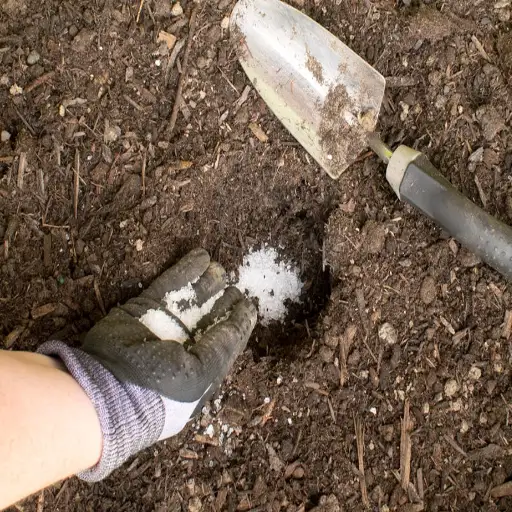
How Much Epsom Salt Should I Use?
The amount of Epsom salt to be used varies according to the requirements of the plants and the results derived from soil testing. For general recommendations, a common application rate for most plants is between one to two tablespoons of Epsom salt per gallon of water. The solution should either be applied directly to the soil or as a foliar spray for quick absorption.
For garden beds, a uniform application of approximately one cup per 100 square feet of soil is often recommended, assuming a magnesium deficiency has been validated. Unlike garden beds, container plants require smaller amounts, for example, a teaspoon mixed into the soil at planting or diluted in water during later maintenance. Any leftover Epsom salt should be mixed thoroughly and uniformly applied to prevent over-concentration, which can harm plants and alter their soil composition.
Recent findings place restraints on indiscriminately administering large gridded applications. This is due to the risk of multi salt elution or other nutrient disorders from over supplementation without verifying below critical constituents when.
What Is the Best Method to Apply Epsom Salt?
The method of applying Epsom salt relates to what the plants require, their soil condition, and environmental factors. For most purposes, Epsom salt, or Magnesium Sulfate, should be dissolved in water for homogenisation and maximized uptake. For optimal results, it is suggested that 1 tablespoon of Epsom salt needs to be diluted in a gallon of water. The solution may also be applied through foliar feeding or as a soil drench, where the roots act as the primary area of supply for the magnesium and sulfur.
As for soil application, Epsom Salt can be spread in granular form on the surface of the area. This method depends on the use of surface watering or sprinkling to mix the salt into the soil so it doesn’t form a crust. Soil sample analysis is a must to plan for adequate magnesium nutrition of magnesiumnutrition between applications. The general guidelines for building up balance suggest using magnesium in rotation sparsely so it does not interfere with nutrient loss from calcium and potassium. Custom-tailored scheduling, like every month or depending on crop cycles, can set application frequency during peak growth periods when it is needed the most.
Because of potential soil imblance concerns, environmental runoff impedance due to indiscriminate use or overuse of Epsom salt is a problem. Epsom salt can be utilized by plants in the case of magnesium deficiency, which further enhances the health of the plant. Magnesium management provided by Epsom salt will maintain sustainable balance with the ecological system.
How Often Should I Add Epsom Salt?
The application frequency of Epsom salt varies with the requirements of your plants, soil conditions, and other environmental factors. For most plants, Epsom salt does not need to be applied more than once a month for general maintenance. However, if applying Epsom salt for magnesium deficiency, frequent application until the deficiency is alleviated and conditions improve may be necessary. For example, Epsom salt could be applied bi-weekly until sufficient improvement in plant health and growth is observed.
For vegetable gardens, one standard recommendation is adding one tablespoon of Epsom salt per foot of the plant’s height as a foliar spray or soil amendment. Glasshouse container plants tend to require more frequent applications, for instance, bi-weekly, while monitoring the plant’s response to avoid applying too much. Special attention to over-application is necessary since these plants are more susceptible to nutrient depletion. While applying Epsom salt, the specific needs of the plants should be noted, as certain plants like tomatoes, roses, and peppers benefit most from magnesium during the flowering and fruiting stages.
To enhance an application, conduct a soil test to check the current level of magnesium. Inordinate use of Epsom salts can create an imbalance by increasing magnesium levels that restrict the use of other vital nutrients, including calcium and potassium. Ensure that you are monitoring soil health indicators and limit your application intervals to maintain balance in the environment and prevent ecological runoff issues.
Is Epsom Salt Good for Tomato Plants and Peppers?
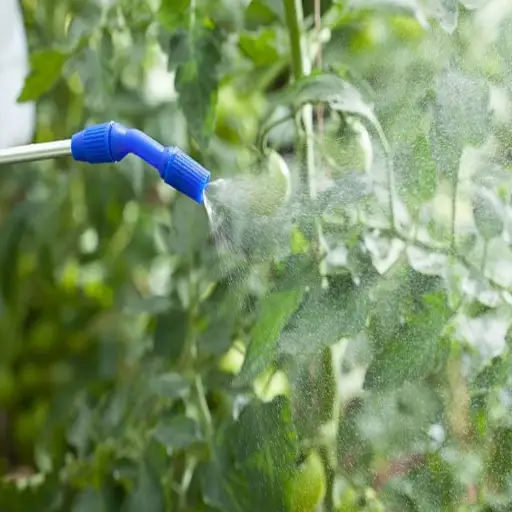
How Does Epsom Salt Prevent Blossom End Rot?
The leading cause of blossom end rot of tomatoes and peppers is a calcium deficiency in the plant’s tissue, not a lack of magnesium. Even so, Epsom salt, a magnesium sulfate compound, is misapplied as a cure. Magnesium plays an important role in plant health, but in the case of blossom end rot, nutrient imbalance caused by salt overuse worsens calcium uptake issues.
Calcium deficiency develops when plants can’t access sufficient calcium due to infrequent watering, sub-optimal soil pH of 6.2 – 6.8, or overly compacted soil that limits root growth. The application of Epsom salt does not resolve calcium deficiencies and provides only a slight improvement to soils lacking magnesium. On the other hand, maintaining correct levels of soil moisture, proper mulching, and enriching the soil with calcium, such as agricultural lime or gypsum, are more effective in preventing blossom end rot.
Regular soil tests should be conducted by gardeners and should inform apace decision making considering the level of available nutrients in the soil. The use of Epsom salt as fertilizer may worsen existing problems with calcium uptake rather than help, making other important plant nutrients less accessible or creating detrimental nutrient imbalances.
How to Apply Epsom Salt to Tomato Plants?
When adding Epsom salt to tomato plants, care must be taken to protect the overarching health of the plant while also maintaining balance with soil nutrients. Epsom salt, or magnesium sulfate, can be used in liquid or solid form, depending on the condition of the soil and the needs of the plants. Before application, soil testing must be conducted so that the magnesium levels are met without oversaturating the soil, since too much magnesium can hinder the availability of calcium and potassium.
For drenching or spraying on plant foliage, Epsom salt can be applied by dissolving 1 tablespoon of salt in a gallon of water. The mixture should be used in early stages of growth or when there are yellowing leaves or poor fruit development, which may indicate e deficiency. To apply granules, about a tablespoon of Epsom salt should be sprinkled evenly around the lower stems of the plants and mixed with water afterwards to ensure it soaks into the ground.
Tracking the plants over a period of time for any benefits or negative changes is crucial, along with fine-tuning the method of application. Remember to avoid overuse. In this case, excess amounts of magnesium could lead to leaching of nutrients or disarray in the ecosystem. Combine this approach with a holistic approach of nutrient management, during the growing season, to enhance the productivity and growth of the plants.
What Are the Benefits of Pepper Plants?
Use of magnesium, especially through Epsom salts, has been found to provide several benefits to pepper plants with regards to nutrient absorption and overall growth. The use of magnesium is important because it serves as the nucleus of the chlorophyll molecule within the plant which is critical for photosynthesis to occur. This ensure that the plant has gets the required energy which will optimize its vegetative parts and also fructification.
Moreover, magnesium aids in the absorption and metabolism of other vital nutrients like nitrogen and phosphorus to be used by the plant, helping in the root growth of the plant. Research has shown that peppers treated with sufficient levels of magnesium demonstrate increased vibrancy in leaves, enhanced stem strength, as well as enlarged fruits that taste better. On top of that, magnesium helps to resolve some of the negative impacts of nutrient restrictions, such as chlorosis or low coloration characteristic of the leaves, which is common on pepper plants because of their nutrient-hungry nature.
As with most things, balance is important. Too much magnesium could disrupt the calcium-potassium balance, which may put the plants at risk.
Can Epsom Salt Be Used for Houseplants?
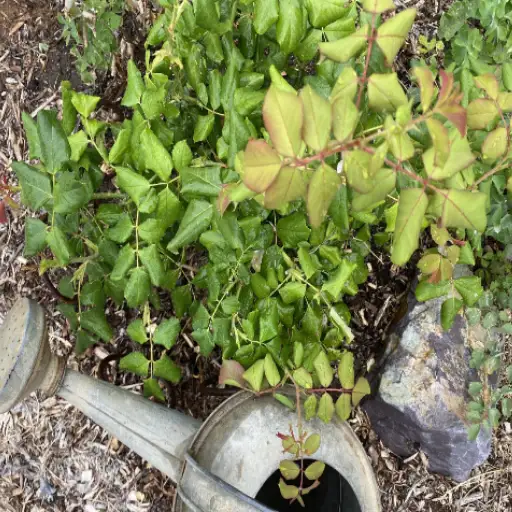
How to Use Epsom Salt for Potted Plants?
Epsom salt, better known as magnesium sulfate, serves as an excellent supplement for plants in pots when used the right way. Since it dissolves easily, plants in contained spaces can readily absorb it, making it a useful remedy for magnesium or sulfur deficiencies. For general maintenance, it is best to dissolve 1-2 teaspoons of Epsom salt in water and use one gallon of the solution to tend to the plants. To encourage healthy foliage and blooming during the off-season, this solution should be poured into the soil directly every 4-6 weeks during the growing season.
In cases where intervention is required, especially if the leaves show signs of deficiency, foliar sprays can be used. This type of intervention can be more effective, especially if targeted, which is why using a foliar spray is recommended for deficient leaves. A foiliar spray with the same concentration of Epsom salt can be made using 1-2 teaspoons of salt in one gallon of water. Using the concoction directly on the leaves means faster absorption and can relieve symptoms like yellowing leaves or poor growth within days. Keep in mind to check how your plants are responding because overapplication might cause excess salt to accumulate in the soil and block nutrients from being used.
When applying Epsom salt, it is also crucial to note the type of plant and its nutritional requirements. Not all plants require magnesium as much as others, depending on the species; for example, magnesium helps tomatoes, peppers, and roses a great deal. To ensure that they are in good condition, conduct periodic soil tests to monitor plant health and determine whether Epsom salt should be included in the nutrient schedule.
What Are the Considerations for Indoor Plants?
The use of Epsom salt has to be approached with technical care when caring for indoor plants is concerned. Indoor spaces often lack many natural features like the rainfall that can help in the leaching process of salts within the soil, which increases the chances of magnesium ski Epsom salt is used. Also, due to the pots being confined spaces, the imbalance of nutrients can be much more rapid than in outdoor settings.
Careful changes need to be made in dosage regarding the particular species of the plant and its growth stage. For example, indoor flowering plants like orchids or peace lilies may require extra magnesium supplementation during blooming cycles. Periodic soil tests should be conducted to determine if there are any key nutrient deficiencies or toxicities, including magnesium, to ensure no deficiencies or toxicities. In addition, indoor plants are usually at a greater risk of suffering damage to the roots by salt concentrations in the soil; hence, Epsom salt is best used with a balanced watering plan to ensure good drainage within the soil.
Finally, light, temperature, and humidity which are often significantly different in indoor settings also have an impact on a plant’s uptake of magnesium. To sum up, Epsom salt can be added to indoor plants but need extreme care, attention and limitation.
How to Mix Epsom Salt Solutions for Gardening?
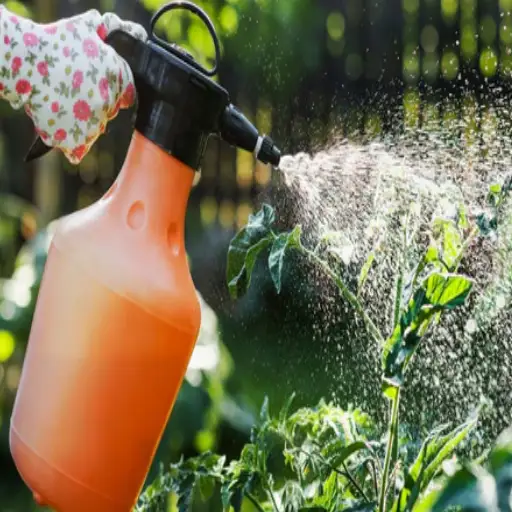
What Is the Proper Ratio of Epsom Salt to a Gallon of Water?
The exact ratio of Epsom salt to a gallon of water is based on the plant’s unique requirements, as well as its growth stage. For most gardening purposes, a ratio of 1-2 tablespoons of Epsom salt to a gallon of water is a common practice. This dosage provides enough magnesium and sulfur preservatives while minimizing the risk of over-fertilization. It is best to fully dissolve the Epsom salt in water before applying it to guarantee equal distribution.
When it comes to foliar sprays where nutrients are provided straight to plant leaves, a dosage of 1 tablespoon of Epsom salt for every gallon of water is recommended. This solution is useful for magnesium deficiency, or magnesium deficiency prevention, if applied every 2-4 weeks during the growing season. When using Epsom salt for soil drenching around plants, a slightly higher concentration of up to 2 tablespoons would be suitable for nutrient-loving plants like tomatoes, roses, and peppers.
Taking into account specific plant needs as well as soil tests prior to application is equally important. Too much magnesium in the soil may create a deficiency in other nutrients, especially calcium. Check the baseline variables related to health and growth of the plant after application and modify concentration if any signs of nutrient poisoning or starvation arise. Regular testing of the soil’s pH and nutrient composition may enhance the efficiency of using Epsom salt solutions in gardening.
Should I Use a Spray or Watering Method?
The selection of a spray or watering method applies to Epsom salt solutions to better serve the needs of the plants in question. Foliar sprays are very helpful in supplying magnesium or sulfur directly to the plants because they allow the nutrients to be absorbed through the leaves. This method works well for plants that are already suffering from nutrient deficiency and are showing symptoms such as stunted growth or yellowing leaves. A common practice consists of one tablespoon of Epsom salt diluted in one gallon of water and put in a spray bottle set to fine mist to ensure even coverage.
Alternatively, the watering method is better suited to solve soil deficiencies and provide a longer period of access to the nutrients for the roots. The method of applying Epsom salt into a container of water and pouring it directly at the base of the plant allows for slower absorption of magnesium and sulfur. This method works as well for wider spaces such as garden beds and lawns.
To get the best results, think about integrating both methods. For instance, early in the growth stages, you can nurture the roots through watering, then address other specific deficiencies with foliar sprays during times of high nutrient requirement. Balance is key, so always reference soil test results to find the optimal condition without risks of harming the plant.
References
Frequently Asked Questions (FAQs)
Q: How does epsom salt benefit garden soil?
A: Epsom salt can help improve garden soil by providing magnesium and sulfate, which are essential nutrients for plant growth. These nutrients help plants absorb other essential nutrients like nitrogen and phosphorus more effectively, promoting healthier and more robust growth.
Q: Can I use epsom salt for plants such as peppers and tomatoes?
A: Yes, using epsom salt for plants like peppers and tomatoes can enhance growth and production. It helps in preventing blossom end rot in tomatoes by providing magnesium, which is crucial for calcium absorption in plants.
Q: How should I apply epsom salt on my plants?
A: You can use epsom salt and water as a foliar spray by dissolving one tablespoon of epsom salt in a gallon of water, which can then be sprayed directly onto the leaves. Alternatively, you can sprinkle a cup of epsom salt around the base of plants or add a handful of epsom salt to the planting hole at the beginning of the season.
Q: Is gardening with epsom salt effective for seed germination?
A: Yes, epsom salt can be beneficial for seed germination. When added to garden soil, it can enhance seed germination by providing essential nutrients that promote healthy seedling development.
Q: How often should I apply epsom salt to my garden plants?
A: It depends on the specific needs of your garden plants and the condition of your soil. If the soil is magnesium deficient, regular applications every month can be beneficial. However, if your plants don’t need much, applying epsom salt once in the growing season might be sufficient.
Q: Can epsom salt be used to help plants suffering from nutrient deficiencies?
A: Absolutely, epsom salt can be used to help plants experiencing magnesium deficiencies, which often manifest as yellowing leaves. By adding epsom salt to the soil, you can quickly address and remedy these deficiencies.
Q: Is it safe to put a handful of epsom salts around the base of my plants?
A: Yes, it is safe to put a handful of epsom salts around the base of your plants. This can provide a slow-release effect of nutrients, helping to maintain healthy plant growth throughout the season.
Q: What are the signs that my garden plants need epsom salt?
A: Signs that your plants might need epsom salt include yellowing between the leaf veins, stunted growth, and reduced fruit production. These symptoms often indicate a magnesium deficiency that epsom salt can help alleviate.
Q: Can epsom salt be used for all types of plants?
A: While epsom salt can benefit many types of plants, some plants may not require additional magnesium and can thrive without it. It’s important to understand the specific needs of your plants and soil before applying epsom salt.

